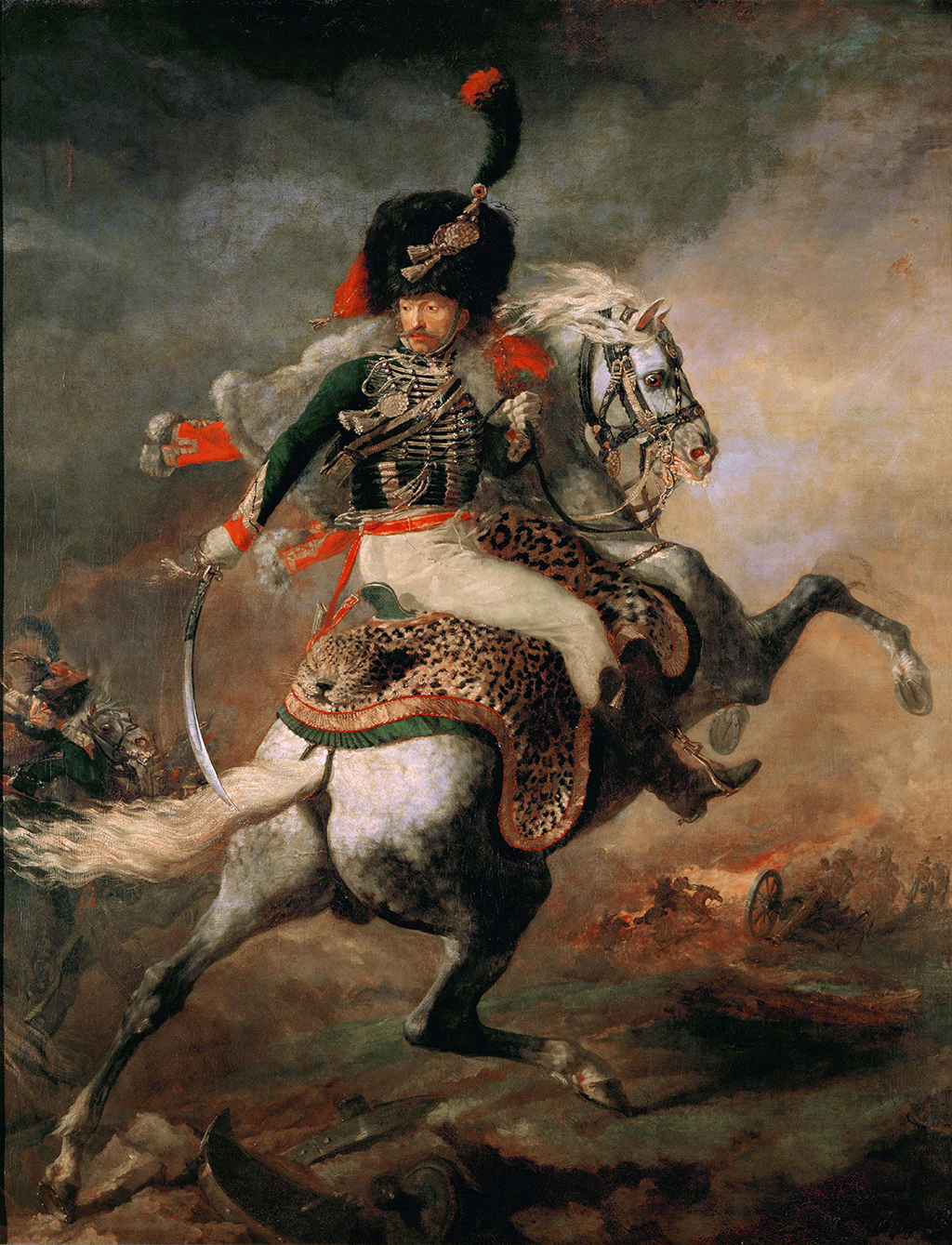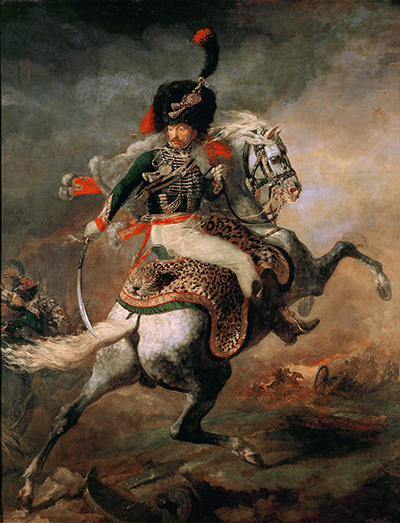Theodore Gericault completed The Charging Chasseur in around 1812 and it remains amongst his most famous paintings.
This huge painting can now be found in The Louvre in Paris and stands at an imposing 349 cm × 266 cm. The scene depicts an officer dressed in traditional military attire from the Napoleonic period of French history. The sheer size of this canvas allowed Gericault to deliver great amounts of detail and the topic of French military can be found in the work of many Romanticist artists from this time. Some have referred to this painting with the alternative name of An Officer of the Imperial Horse Guards Charging.
Artist Gericault was approaching his peak by this stage of his career, with his groundbreaking Raft of the Medusa arriving just a few years later. Gericault was by no means the first artist to capture equestrian scenes of war but his contribution is unique in certain elements of the style that he used. Most art historians are aware of contributions to this genre by previous masters such as Rubens, Velazquez and Verrocchio whilst Jacques Louis David also came from the same French angle as Gericault.
Different artists would tackle the same partnership of man and horse from different angles. By coming from the rear of the horse the artist is delivering an atmosphere of danger and vulnerability. The soldier’s response can therefore be seen as brave. It is possible that the artist’s decision to do this may have been influenced by Peter Paul Rubens' earlier piece, entitled Saint George.





